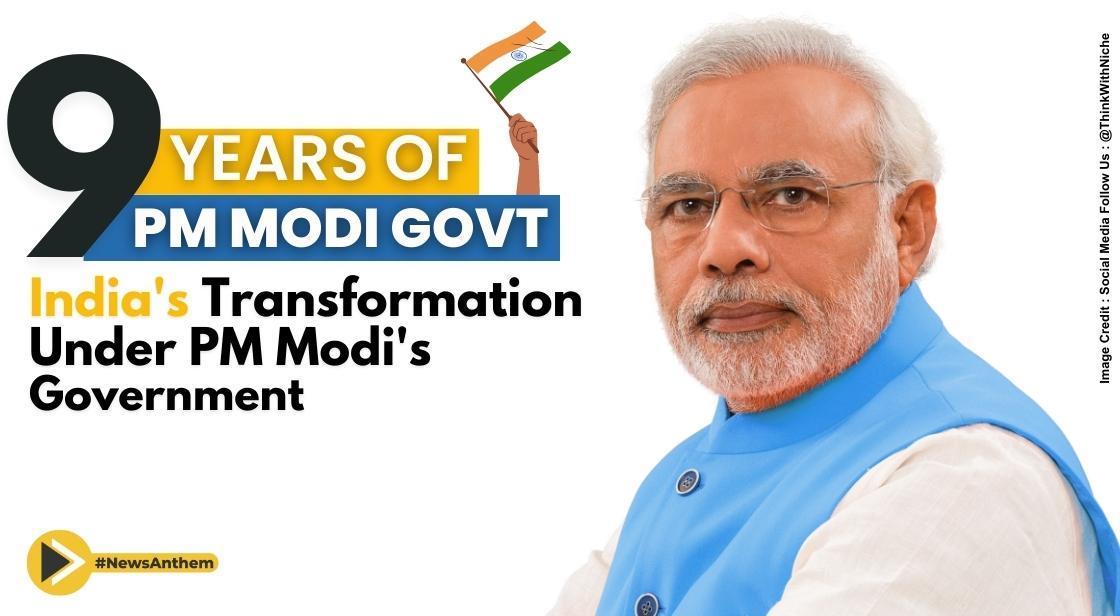9 years of PM Modi govt: India's Remarkable Transformation Under PM Modi's Government: Morgan Stanley Report

News Synopsis
Morgan Stanley Report: India's Transformative Journey under PM Modi's Government
Recognition of India's Remarkable Transformation
Morgan Stanley, a leading global financial institution, has released a comprehensive report acknowledging the transformative impact of the Narendra Modi-led government in India over the past nine years.
Titled "India Equity Strategy and Economics: How India Has Transformed in Less than a Decade," the report highlights significant positive consequences for India's macroeconomy and market outlook on the global stage.
India's Emergence as a Key Driver for Asia
According to the report, India is predicted to emerge as a key driver for Asia and is expected to contribute to one-fifth of global growth in the coming decade. Morgan Stanley dismisses the skepticism surrounding India's potential, particularly among overseas investors who overlook the substantial changes that have occurred since 2014.
Ten Significant Changes in India's Policy Landscape
The report outlines ten major changes that have shaped India's economy and market, primarily driven by policy choices. These changes include supply-side policy reforms, the formalization of the economy, the Real Estate (Regulation and Development) Act, digitalization of social transfers, the Insolvency and Bankruptcy Code, flexible inflation targeting, focus on foreign direct investment (FDI), India's "401(k) moment," government support for corporate profits, and a multiyear high in multinational corporation (MNC) sentiment.
Achievements and Transformative Measures
The report highlights India's achievements over the years, citing a corporate tax rate below 25% for a decade and a lower rate of 15% for new companies. It also acknowledges significant advancements in infrastructure development, including national highways, broadband penetration, renewable energy, and railway electrification.
Implications for India's Future Growth
The report provides valuable insights into India's future growth potential, projecting a rise in manufacturing and capital expenditure as a percentage of GDP by 2031. It predicts a doubling of India's export market share to 4.5% by 2031, a major shift in the consumption basket driven by increasing per capita income, lower volatility in inflation and interest rate cycles, and a benign trend in the current account deficit.
Positive Outlook for India's Financial Services and Energy Sectors
The report foresees unprecedented growth in India's financial services sector until 2032 and an energy boom in the coming years. It also acknowledges the reduction in India's correlation with oil prices and US recession, indicating improved macro stability and reduced reliance on global capital flows.
Key Risks and Future Challenges
While highlighting India's remarkable progress, the report also identifies key risks for the Indian economy. These risks include a global recession, a fragmented general election outcome in 2024, potential commodity price hikes due to supply disruptions, and shortages in skilled labor supply.
Optimistic Growth Projection for India
Morgan Stanley predicts a growth rate of 6.2% for India in the current financial year 2023-24, further affirming the country's improving macroeconomic stability. The report's findings have garnered positive reactions, with Rajeev Chandrashekhar, the Union Minister for Information Technology, emphasizing the significant difference between the "new India" under PM Modi's leadership and the period between 2004 and 2014.
India's Economic Reforms
The report notes that India has made significant economic reforms in recent years, including reducing corporate taxes, simplifying regulations, and improving infrastructure. These reforms have made India a more attractive destination for foreign investment and have helped to boost economic growth.
India's Growing Middle Class
The report also notes that India has a large and growing middle class. The middle class is expected to reach 500 million people by 2030. This growing middle class will create a large market for goods and services, which will further boost economic growth.
India's Young Population
Finally, the report notes that India has a young population. The median age in India is 29 years old. This young population will provide a large pool of workers for businesses, which will help to sustain economic growth.
Here are some facts :
- India's GDP is expected to grow at an average rate of 7% per year in the next decade.
- India's exports are expected to double in size by 2030.
- India is expected to attract $1 trillion in foreign investment by 2030.
News Conclusion
The Morgan Stanley report recognizes India's remarkable transformation under the Narendra Modi-led government, emphasizing the positive consequences for India's macroeconomy and market outlook.
It highlights key policy changes, achievements, and future growth opportunities, while also acknowledging potential risks and challenges. The report's optimistic growth projection reinforces India's position as a key driver of global growth in the coming decade.
Overall, the report by Morgan Stanley is a positive assessment of India's economic prospects. The report predicts that India will be a major driver of global growth in the next decade.
You May Like









